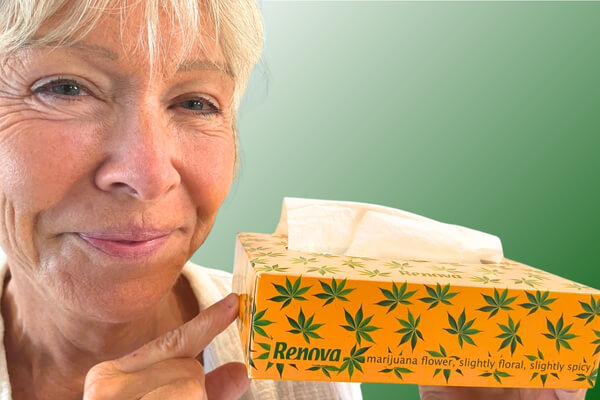As a little kid, my alcoholic mother was prone to frequent bouts of outrage and anger. It could easily devolve into violence. This hallmark of my childhood made me skilled at trying to settle things down. If I sensed mom getting wound-up, I learned that the best way to avoid conflict was to appease her at all costs – by saying or doing something that would make her feel good. Doing this became a survival mechanism for me.
Maybe you can relate? Was this “fawning” response part of your childhood also?
It was actually a smart strategy for those of us who faced these threats because it might just protect us from immediate harm by avoiding conflict or aggression. But for me over time, as I grew into adulthood, this fawning response became an automatic habit — often a coping mechanism of trying to avoid conflict through people-pleasing in my relationships. In doing this, I’d go out of my way to say things I didn’t really mean, or agree with someone when I felt otherwise. All in the way of trying to keep the peace.
I find this “fawn response” isn’t as widely known as the fight, flight, or freeze responses (which I also had my share of!). But it’s an equally important facet of our self-protecting behaviors that were often formed during traumatic events. When we can begin recognizing them in ourself, we can begin to unravel these patterns so that we can begin changing behaviors that no longer serve us. This emotional recovery process is what I had to do and I believe it’s what everyone else who grapples with these fear responses needs to do – in order to find peace and emotional resiliency in their life.
Life-Saving Responses
Before I talk about the fawn response, I just want to touch on the other three, which are the better known reactions when we believe we’re in danger. Now that we’re adults, danger is relative. There may not be a dangerous situation, but our primitive brain that recorded unsafe events instinctually reacts as if we are in danger.
Let’s take an example between you and another person who are in a close relationship. Your partner says to you, “You shouldn’t have spoken to our friends like that. It was really out of line!”
If this triggers you and you react in a fight, or flight or freeze response, this is what it might look like:
Fight response: When something scares or threatens us, this option is to fight back. It’s a “stand your ground” instinct where you confront the issue head-on. So if your partner criticizes the way you handled a situation with mutual friends, you might yell back, “You’re no better! You always make things worse!”
Flight response: This is the “run away” option. Instead of engaging in the conversation, you feel overwhelmed and say, “I don’t want to talk about this right now!” You leave the room or go for a drive and avoid the discussion altogether, hoping it blows over without addressing it.
Freeze response: As they criticize you, you feel an intense wave of anxiety and just stand there silently unable to respond. You don’t defend yourself, apologize, or offer any explanation. You feel stuck and powerless, unsure of what to do or say.
What the fawn response might look like
Now, fawning happens when you respond to a threat by trying to “please” the person triggering this fear in you. Instead of standing up for yourself or explaining your side, you might immediately apologize and say something like, “You’re right I was totally wrong. I’ll make it right with them and do better next time. I don’t want to upset you.”
In other words, fawning is a way of coping by becoming overly agreeable, putting others’ needs ahead of your own, and trying to avoid conflict through people-pleasing.
Do you recognize any of these ways fawning shows up for you?
People-pleasing: Saying yes to everything, even when you don’t want to – just to avoid someone being upset.
Over-apologizing: Apologizing for things that aren’t your fault, or for things that don’t need an apology.
Difficulty setting boundaries: Saying “no” feels impossible because you fear rejection or conflict.
Ignoring your own needs: Prioritizing others’ feelings over your own to the point of neglecting your own well-being.
Often, folks who are prone to fawning have been conditioned to believe that their own needs and feelings come second to others, which is emotionally draining.
How to recognize and manage your fawning
The good news is that this is a great opportunity to sharpen your awareness and recognize your fawn responses. I sound like a broken record, but cultivating awareness of these patterns can lead you to learn to manage and overcome the fawn response.
Here are some strategies to think about:
1. Become aware of it: (There’s that word awareness again!) The first step is recognizing when you’re fawning. Pay attention to moments when you feel like you’re saying yes just to keep the peace or going out of your way to satisfy someone at your own expense.
2. Practice setting boundaries: Start with baby steps (I’m a big believer in baby steps!). Practice saying no to things that don’t align with your needs. Sure, it likely will be uncomfortable at first, but setting boundaries is key to breaking the fawning habit.
3. Learn to check in with yourself: Ask yourself what you truly want or need in a given situation. Learning to prioritize your own feelings is crucial for undoing the people-pleasing cycle. This is about truly knowing what you want – the emotion of Desire is one of the first emotions we become acquainted with in my Emotional Liberation coursework. Often in childhood, we were never asked what we wanted; it was always others making us do what they wanted. This early conditioning set our pattern for having no idea what we desire or need.
4. Build self-worth: A lot of fawning stems from the fear of rejection or not being liked. When we work on our self-esteem and recognizing our own value, that progressively lessens the need for external approval.
5. Seek support: If you feel the fawn response is deeply ingrained and is causing distress, my emotional release work can help you explore the underlying causes and develop healthier coping mechanisms. I’m currently working on a video-based online course where we also meet live for group gatherings and coaching. If you have an interest, I invite you to register your interest here.
Above all, it’s not about blaming yourself for fawning, but understanding where it comes from and how you can start to shift those patterns to healthy responses. For starters, the next time you find yourself in a tricky situation, take a moment to ask yourself, “Am I fawning?” If so, try to pause, reflect, and find a way to honor your own needs. After all, identifying and getting our needs met is the key to a fulfilling life.
With Love,
Becca
P.S. You have thoughts about this? I invite you to drop down to the comments section and let me know!





